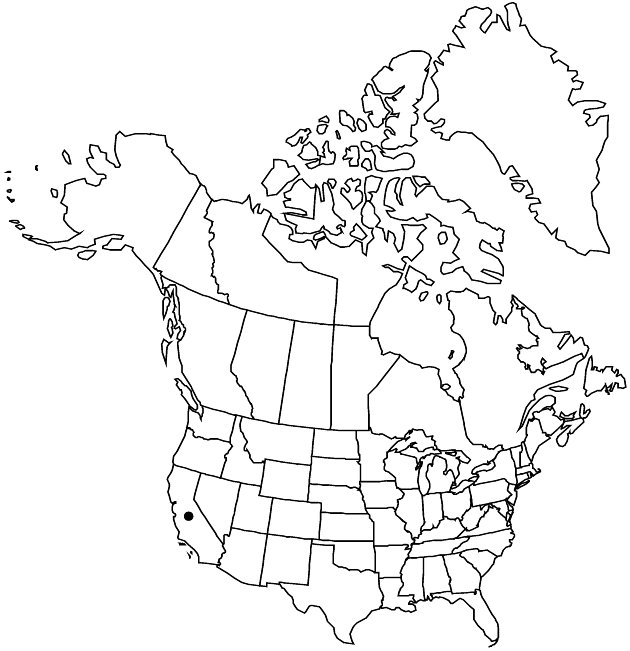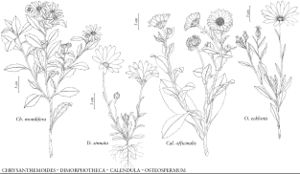Osteospermum ecklonis
Stud. Calenduleae, 244. 1943.
IntroducedIllustrated
Basionym: Dimorphotheca ecklonis de Candolle in A. P. de Candolle and A. L. P. P. de Candolle, Prodr. 6: 71. 1838
Treatment appears in FNA Volume 19. Treatment on page 383.
Perennials, subshrubs, or shrubs, 10–100+ cm. Leaf-blades obovate or oblong to elliptic or oblanceolate, 30–50 (–100+) × 10–20 (–40+) mm, margins entire or denticulate, faces stipitate-glandular (at least distal leaves), glabrescent. Peduncles (25–) 50–150+ mm. Phyllaries 12–16+, 10–15+ mm. Ray-florets 12–21+; corollas abaxially usually violet to blue or purplish, sometimes cream to pink or salmon, adaxially whitish to blue or purplish, laminae (15–) 20–45+ mm. Disc-florets 40–60+; corollas ± purplish, 3.5–4.5 mm. Cypselae 6–7 mm. 2n = 20.
Phenology: Flowering Dec–Apr.
Habitat: Disturbed places
Elevation: 0–200 m
Distribution

Introduced; Calif., Africa
Discussion
Selected References
None.
Lower Taxa
None.
"broader" is not a number.
... more about "Osteospermum ecklonis"
tailed +
introrse +
connate +
rounded;truncate +
scarious +
hirsute +
papillate +
penicillate +
continuous +
decurrent +
oblong;oblanceolate lanceolate or linear +
winged +
tuberculate +
ridged +
discernible +
stigmatic +
absent +
winged +
tuberculate +
6mm;7mm +
staminate +
straight +
distinct +
proximal +
1;5 +
bisexual +
dispersed +
singly +
indeterminate +
heterogamous +
Present +
true +
surrounding +
campanulate;hemispheric +
oblong;elliptic or oblanceolate +
10mm;20mm +
cauline +
deltate +
2-carpellate +
inferior +
attached +
anatropous +
absent +
tough +
thick +
connate +
persistent +
distinct +
herbaceous +
equal +
Stud. Calenduleae, +
1943 +
pistillate +
fertile +
epaleate +
flat;conic +
fibrous +
exalbuminous +
modifed +
1;1;2 +
alternate +
procumbent +
erect +
2-branched +
papillate +
Osteospermum ecklonis +
Osteospermum +
species +
campanulate +
shorter +
perennial +
